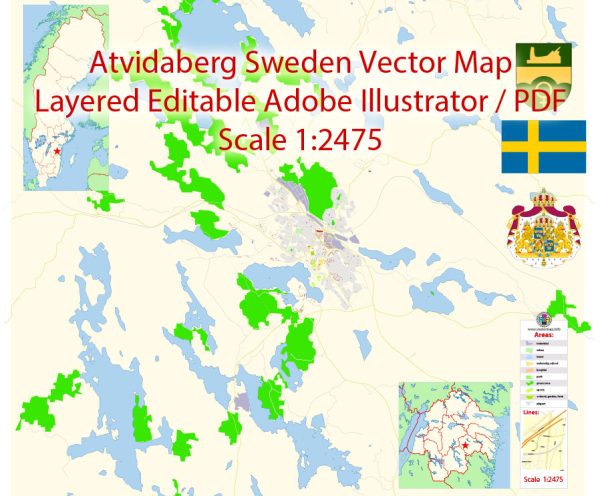The history of urban development in Åtvidaberg, Östergötland, Sweden, is a fascinating journey that has seen the town evolve from a rural settlement into a thriving industrial and residential center. Here is an overview of its development:
- Early Settlement: Åtvidaberg’s history dates back to the Middle Ages when it was initially a small agricultural settlement. The area was sparsely populated and primarily consisted of farms and villages.
- Industrial Revolution: The transformation of Åtvidaberg began during the 18th century with the rise of industrialization. Ironworks, mining, and manufacturing became integral to the town’s economy. This period saw the establishment of factories, foundries, and mills, which played a crucial role in shaping the town’s landscape.
- Åtvidaberg Company: The Åtvidaberg Company, founded in 1759, played a significant role in the town’s development. It was known for its iron production and later expanded into producing various machinery and appliances. The company was instrumental in creating jobs and attracting workers to the area.
- Urbanization: As the industrial sector grew, the population of Åtvidaberg increased. The town’s urban development was marked by the construction of worker housing, schools, and various amenities to support the growing community. The industrialists of the time also invested in infrastructure, such as roads and railways, to facilitate trade and transportation.
- Åtvidaberg’s Unique Housing: One notable feature of Åtvidaberg’s urban development is its unique style of workers’ housing. The town is known for its “Åtvidaberg houses,” which were small, practical, and well-planned homes built to accommodate the workforce. These houses are a distinct architectural feature of the town.
- Post-Industrial Era: With changes in the global economy, Åtvidaberg, like many industrial towns, faced challenges in the late 20th century. Some of the factories and industries declined or closed, leading to economic shifts. However, the town has adapted by diversifying its economy, supporting local businesses, and investing in new sectors.
- Preservation and Heritage: Åtvidaberg has recognized the importance of preserving its industrial and cultural heritage. Efforts have been made to maintain and restore historic buildings, such as the Åtvidaberg Church and the old ironworks site, which has been converted into a museum.
- Modern Development: Today, Åtvidaberg has evolved into a modern, vibrant town with a mix of industrial, commercial, and residential areas. It continues to be a hub for manufacturing, with some of the old industries still operational alongside new businesses and services.
- Cultural and Recreational Activities: The town has developed a variety of cultural and recreational activities, such as sports facilities, parks, and community events, to enhance the quality of life for its residents and attract visitors.
The history of urban development in Åtvidaberg reflects the town’s transition from a small agricultural settlement to a thriving industrial center, and its ability to adapt to changing economic conditions. It stands as a testament to the resilience and evolution of small Swedish towns in the face of economic and societal changes.


 Author: Kirill Shrayber, Ph.D.
Author: Kirill Shrayber, Ph.D.